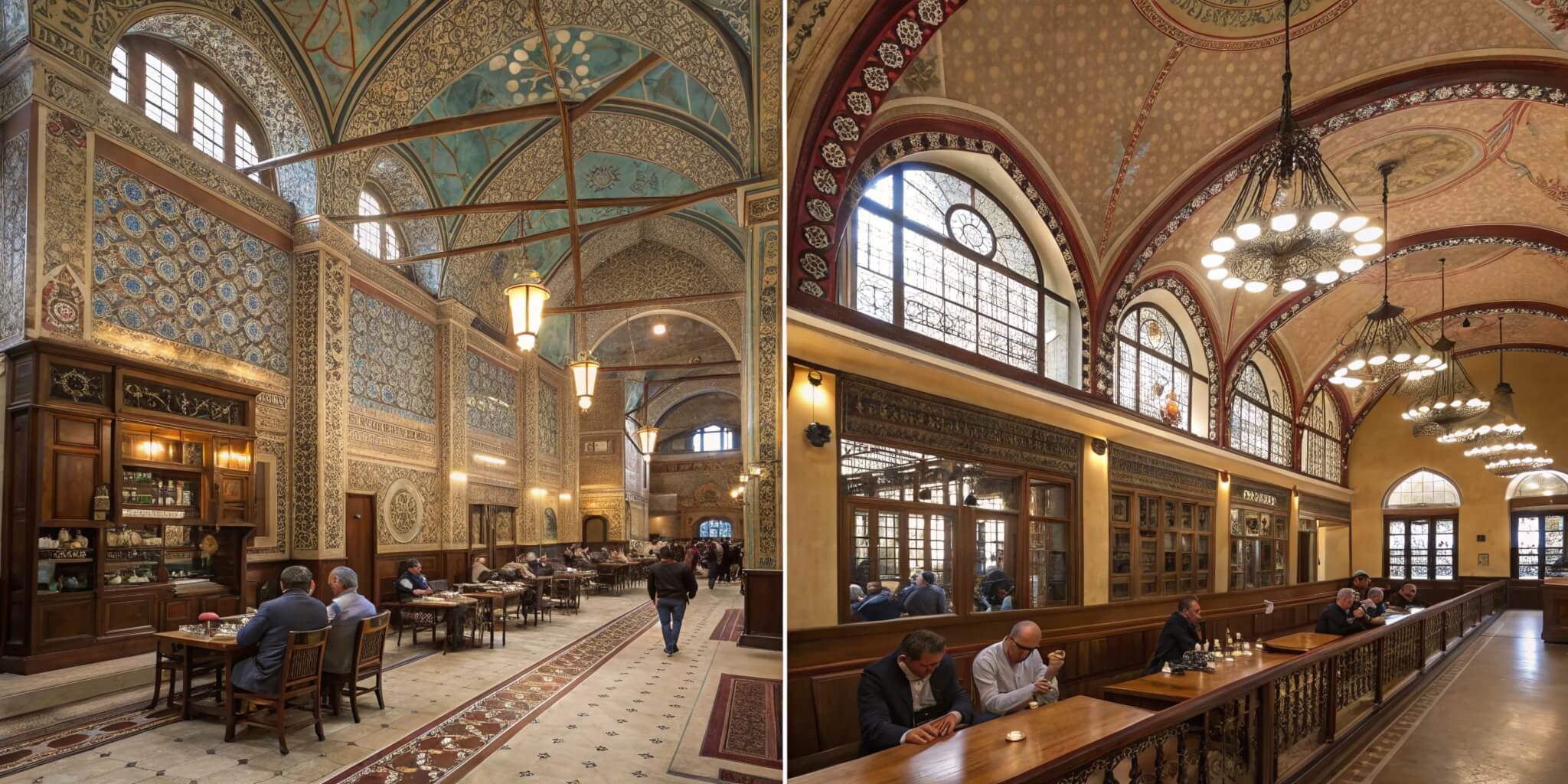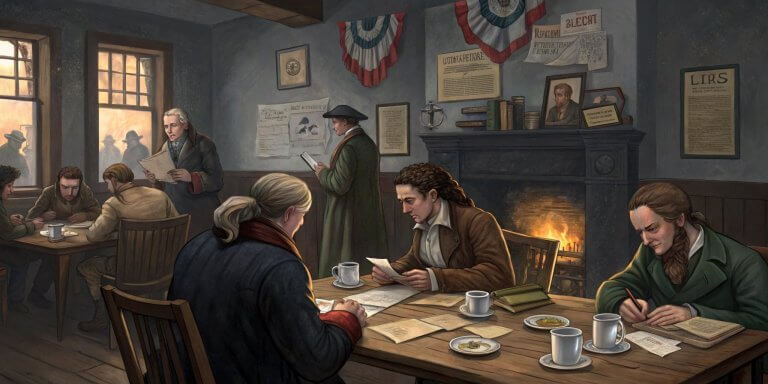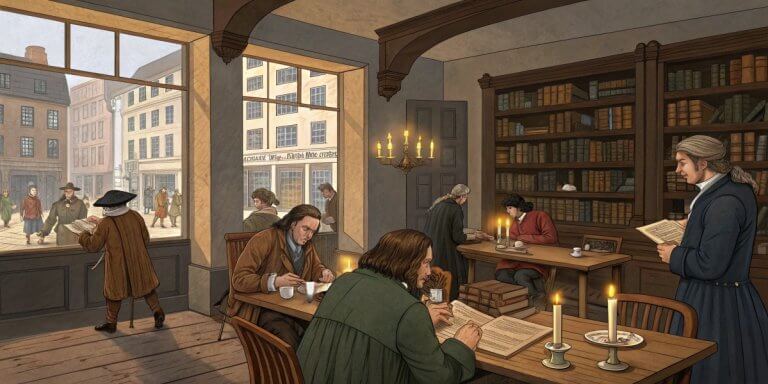The Evolution of Coffee House Architecture: A Timeless Journey

Coffeehouses, more than just places to drink coffee, have always been community centers, intellectual hubs, and social spaces. Their architecture, evolving over the centuries, reflects cultural, social, and economic changes. From the humble, communal spaces of the Ottoman Empire to the sleek, minimalist designs of modern cafés, coffeehouse architecture tells a story of how these spaces have shaped and been shaped by the people who frequent them, creating a sense of belonging and community.
Early Ottoman Coffeehouses
The origins of the coffeehouse can be traced back to the Ottoman Empire in the mid-16th century. These early coffeehouses were unique, communal spaces where people gathered to drink coffee, share stories, and discuss politics and culture. Architecturally, they were often characterized by low seating arrangements and open communal areas that fostered conversation. These spaces were not built for privacy but for social interaction, a key feature of Ottoman culture.
The architecture of these coffeehouses was practical and functional. Their open design allowed large groups to gather, while their simplicity made them accessible to various social classes. Using wooden structures, rugs, and cushions gave the spaces a warm, inviting atmosphere. Coffeehouses became a central part of urban life in cities like Istanbul, often near markets, mosques, and public squares.
European Coffeehouses
By the 17th century, coffeehouses had spread to Europe, where they took on a new role as vibrant centers of intellectual exchange. In cities like London, Paris, and Vienna, coffeehouses became the preferred gathering places for artists, writers, and philosophers. The architecture of these European coffeehouses was a reflection of their pivotal role in fostering public debate and intellectual discussion.
In London, for example, coffeehouses were often designed with large windows and high ceilings, which created a sense of openness and transparency. Communal tables encouraged conversation among strangers, and the design emphasized social interaction. Coffeehouses like Café Procope in Paris and Café Central in Vienna became iconic for their ornate designs, with marble countertops, chandeliers, and elaborate woodwork.
The architectural design of these coffeehouses was meant to inspire creativity and intellectual discourse. The bright, airy interiors reflected the Enlightenment ideals of clarity, reason, and progress. The emphasis on communal space rather than private booths made these coffeehouses perfect for exchanging ideas.
.
19th Century Coffeehouses
As the Industrial Revolution swept across Europe in the 19th century, coffeehouses became more elaborate in their design. With urbanization came the need for more sophisticated spaces that catered to an increasingly wealthy clientele. Coffeehouses during this period featured intricate architectural details such as chandeliers, elaborate carvings, and opulent furnishings.
In addition to serving coffee, many 19th-century coffeehouses expanded their offerings to include dining rooms, reading rooms, and smoking lounges. This expansion of space and function was reflected in the architecture, with coffeehouses becoming more extensive and more compartmentalized. Separate rooms were designed for different activities, creating a more segmented social environment than the communal spaces of earlier coffeehouses.
The Rise of the American Coffeehouse
In the 20th century, coffeehouses began to take root in the United States, particularly in cities like New York and San Francisco. American coffeehouses were often characterized by their simple yet functional design, starkly contrasting their ornate European counterparts. They featured minimalist interiors that emphasized functionality over ornamentation.
Post-World War II coffeehouses in the U.S. became gathering places for the Beat Generation, a group of writers and artists who rejected mainstream culture. These coffeehouses were often modest, with bare walls, wooden tables, and dim lighting, creating an intimate environment for poetry readings and philosophical discussions.
The architecture of these coffeehouses reflected the countercultural movement of the time, which emphasized simplicity and authenticity over luxury and sophistication.
Modern Coffeehouse Design
The rise of third-wave coffee culture in the late 20th and early 21st centuries brought a new focus on quality and craftsmanship. This movement emphasized sustainability, ethical sourcing, and the artistry of coffee-making, and these values were reflected in the architecture of modern coffeehouses. The design of modern cafés often prioritizes natural light, eco-friendly materials, and multi-functional spaces catering to social gatherings and remote work.
One hallmark of modern coffeehouse architecture is its minimalist aesthetic. Clean lines, open spaces, and neutral color schemes create a calm and welcoming atmosphere. In cities worldwide, coffeehouses like Blue Bottle and Intelligentsia Coffee have become known for their sleek, minimalist designs emphasizing simplicity and functionality.
In addition to their aesthetic appeal, modern coffeehouses are designed with functionality in mind. Many cafés now feature communal workspaces, power outlets, and free Wi-Fi to accommodate the growing number of customers who use coffeehouses as places to work or study. This blend of social space and workspace has become a defining feature of the modern coffeehouse.
Global Influences
While modern coffeehouses often share similar design elements, it’s the influence of local culture that significantly shapes their architecture. For example, many coffeehouses in tropical regions are designed with open-air seating areas and natural ventilation to take advantage of the warm climate. In colder regions, coffeehouses may feature fireplaces, thick curtains, and cozy seating arrangements to create a warm and inviting atmosphere. This diversity in design elements enriches the coffeehouse experience, making it more than just a place to drink coffee.
In Europe, historic coffeehouses like Café Florian in Venice and Café A Brasileira in Lisbon have retained much of their original architectural charm. Their ornate facades and luxurious interiors reflect their respective cities’ grandeur. These coffeehouses have become cultural landmarks, attracting locals and tourists who appreciate their architectural and historical significance.
The Future of Coffeehouse Architecture
As coffee culture continues to evolve, so too will coffeehouse architecture. One emerging trend is the focus on sustainability, with many coffeehouses incorporating eco-friendly materials and energy-efficient designs into their architecture. This includes using recycled wood, solar panels, and green roofs to reduce the building’s environmental impact.
Another trend shaping the future of coffeehouse architecture is the integration of technology. Smart coffeehouses are being designed with digital ordering systems, mobile payment options, and adaptive lighting and seating arrangements that can change throughout the day to accommodate different types of customers.
These innovations reflect the changing needs of customers, many of whom use coffeehouses as flexible workspaces and social gathering spots.
Conclusion
The architecture of coffeehouses has evolved significantly over the centuries, reflecting the times’ social, cultural, and economic changes. From the communal spaces of the Ottoman Empire to the sleek, modern cafés of today, coffeehouse architecture has always been shaped by those who use these spaces. As coffee culture continues to grow and change, we can expect coffeehouse architecture to evolve, creating beautiful but also functional and sustainable spaces. The story of coffeehouse architecture is a testament to the enduring power of coffee as a social and cultural force.






